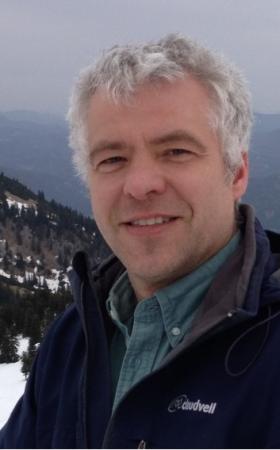
Prof. Jan Egedal, University of Wisconsin - Madison
Jan Egedal
University of Wisconsin - Madison
Wednesday, August 24, 2016
11:00am
Abstract: The transport of matter and radiation in the solar wind and terrestrial magnetosphere is a complicated problem involving competing processes of charged particles interacting with electric and magnetic fields. Given the rapid expansion of the solarwind, it would be expected that superthermal electrons originating in the corona would cool rapidly as a function of distance to the Sun. However, this is not observed, and various models have been proposed as plausible candidates for heating the solar wind as it super-sonically streams away from the sun. In the compressional pumping mechanism explored by Fisk & Gloeckler particles are accelerated by random compressions by the interplanetary wave turbulence. This theory explores diffusion due to spatial non-uniformities and provides a mechanism for redistributing particle. For investigation of a related but different heating mechanism, magnetic pumping, in our work we include diffusion of anisotropic features that develops in velocity space. The mechanism allows energy to be transferred to the particles directly from the turbulence. Guided by kinetic simulations a theory is derived for magnetic pumping. At the heart of this work is a generalization of the Parker Equation to capture the role of the pressure anisotropy during the pumping process.
Bio: Dr. Jan Egedal received his MS in Physics from the Technical University of Denmark in 1994 and his PhD in experimental plasma physics from Oxford University in 1998. His graduate work focused on the measurements of fast ions in the JET tokamak using Collective Thomson Scattering of a high-power microwave beam injected into the magnetically confined plasma. He became a Post-Doc at MIT in 1998 where he implemented a basic plasma physics experiment on the Versatile Toroidal Facility (VTF) to study the properties of magnetic reconnection. While continuing the work on reconnection, in 2000 he became a research scientist and in 2005 he joined the MIT Physics Department as a junior faculty. In 2010 he was elected fellow of APS “for pioneering contributions to understanding of driven and spontaneous magnetic reconnection in laboratory and space plasmas and the fundamental role played by trapped electrons”. In 2013 Dr. Egedal joined the Physics Department at UW-Madison where he now serves as an Associate Professor. At Madison, he has initiated a new Terrestrial Reconnection Experiment (TREX), which is spatially the largest dedicated reconnection experiment constructed to date. As such, TREX, is uniquely relevant to astrophysical plasmas in its capabilities to extend the frontiers of experimental reconnection research, including the access to the collisionless regime at a large system size. His current research also includes analysis of spacecraft data as well as theoretical and analytical work on anisotropic electron energization during reconnection.